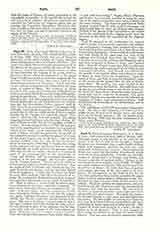

Paul V, POPE (CAMILLO BORGHESE), b. at Rome, September 17, 1550; elected May 16, 1605; d. January 28, 1621. Although proud to call himself, as we read on the facade of St. Peter’s and on his epitaph, a Roman, Borghese was descended from a noble family of Siena which held important positions in that city, and claimed St. Catherine for a relative. Their removal to Rome was caused by the endless disturbances which made life in Siena unbearable. Camillo was carefully trained in jurisprudence at Perugia and Padua, and became a canonist of marked ability. He rose in the ecclesiastical career steadily, if not rapidly; in 1596 he was made cardinal by Clement VIII, and became Cardinal–Vicar of Rome. He held aloof from all parties and factions, devoting all his spare time to his lawbooks. In consequence, on the death of Leo XI, all eyes were centered on him, and he ascended the papal throne without engagement or obligation of any sort. His legal training was soon visible in all his words and actions. He knew nothing of compromises, and proceeded to rule the Church not from the standpoint of diplomacy but from the decretals. He conceived it his duty to maintain inviolate every right and claim advanced by his predecessors. This made his character at times assume a very stern and uncompromising aspect. His first public act was to send home to their sees the prelates and even the cardinals who were sojourning at Rome upon one or other pretext. The Council of Trent had declared it a grave sin for a bishop to be an absentee. That he was engaged in Rome doing the business of the Holy See made no difference. Paul was soon involved in controversy with various cities of Italy on matters concerning ecclesiastical jurisdiction and the relations between Church and State. The bitterest quarrel was with the proud Republic of Venice, which refused to acknowledge the exemption of the clergy from the jurisdiction of the civil courts and passed two laws obnoxious to the Roman Curia, the first forbidding the alienation of real property in favor of the clergy, the second demanding the approval of the civil power for the building of new churches. Paul demanded the repeal of these anti-clerical ordinances, and insisted that two clerics who had been committed to prison should be surrendered to the ecclesiastical court. The dispute became daily more bitter and gradually developed into a broad discussion of the relative position of Church and State. What gave the quarrel a European importance was the ability of the champions who entered the field on either side. For the claims of the Church stood Cardinals Baronius and Bellarmine; the cause of Venice was defended by the Servite Paolo Sarpi, a man of wonderful literary skill and a sworn enemy of the Roman Court. On April 17, 1606, the pope pronounced sentence of excommunication against the doge, Senate, and Government collectively. He allowed a very short space for submission, after which he imposed an interdict on the city. The clergy had now to take sides for or against the pope. With the exception of the Jesuits, the Theatines, and the Capuchins, who were immediately expelled, the entire body of secular and regular clergy held with the Government and continued to hold services, notwithstanding the interdict. The festival of Corpus Christi was celebrated with unusual splendor, and Sarpi said Mass for the first time in years. The schism lasted about a year; and peace was patched up through the mediation of France and Spain. The Republic refused to repeal the obnoxious laws openly, but promised “to conduct itself with its accustomed piety”. With these obscure words the pope was forced to be content; he removed the censures March 22, 1607. The Theatines and Capuchins were permitted to return; an exception was made against the Jesuits.
The pope watched vigilantly over the interests of the Church in every nation. On July 9, 1606, he wrote a friendly letter to James I of England to congratulate him on his accession to the throne, and referred with grief to the plot recently made against the life of the monarch. But he prays him not to make the innocent Catholics suffer for the crime of a few. He promises to exhort all the Catholics of the realm to be submissive and loyal to their sovereign in all things not opposed to the honor of God. Unfortunately the oath of allegiance James demanded of his subjects contained clauses to which no Catholic could in conscience subscribe. It was solemnly condemned in two Briefs, September 22, 1606, and August 23, 1607. This condemnation occasioned the bitter dissension between the party of the archpriest George Blackwell and the Catholics who submitted to the decision of the Holy See. In Austria the efforts of the pope were directed to healing the disputes among the Catholics and to giving moral and material aid to the Catholic Union. He survived the battle of Prague, which put an end to the short reign of the Calvinistic “winter-king”.
Paul V was no more free from nepotism than the other pontiffs of that century. But if he seemed to show too many favors to his relatives, it must be said that they were capable men of blameless lives, and devoted their large revenues to the embellishment of Rome. Paul had the honor of putting the finishing touches to St. Peter’s, which had been building for a century. He enriched the Vatican Library, was fond of art, and encoufaged Guido Reni. He canonized St. Charles Borromeo and St. Frances of Rome. He beatified Sts. Ignatius Loyola, Francis Xavier, Philip Neri, Theresa the Carmelite, Louis Bertrand, Thomas of Villanova, and Isidore of Madrid. During his pontificate a large number of new institutes for education and charity added new lustre to religion. His remains were placed in the magnificent Borghese chapel in St. Mary Major’s, where his monument is universally admired.
JAMES F. LOUGHLIN

